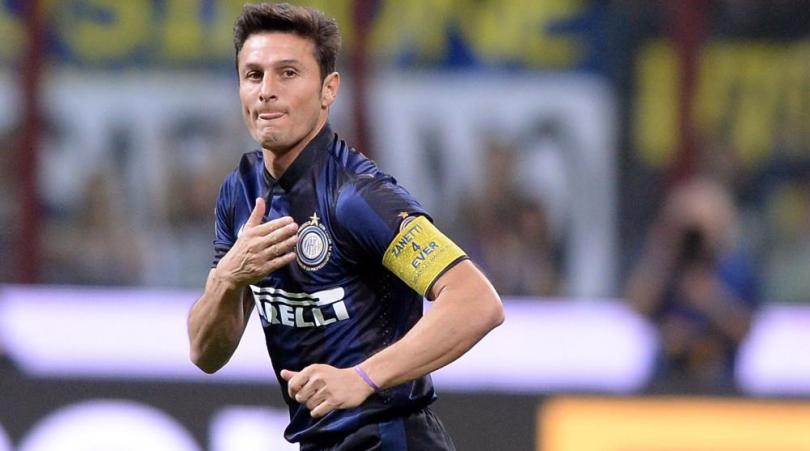Why Manuel Pellegrini could be forced out of his comfort zone to beat Barcelona
Michael Cox assesses the tactical evolution of City's Chilean chief...
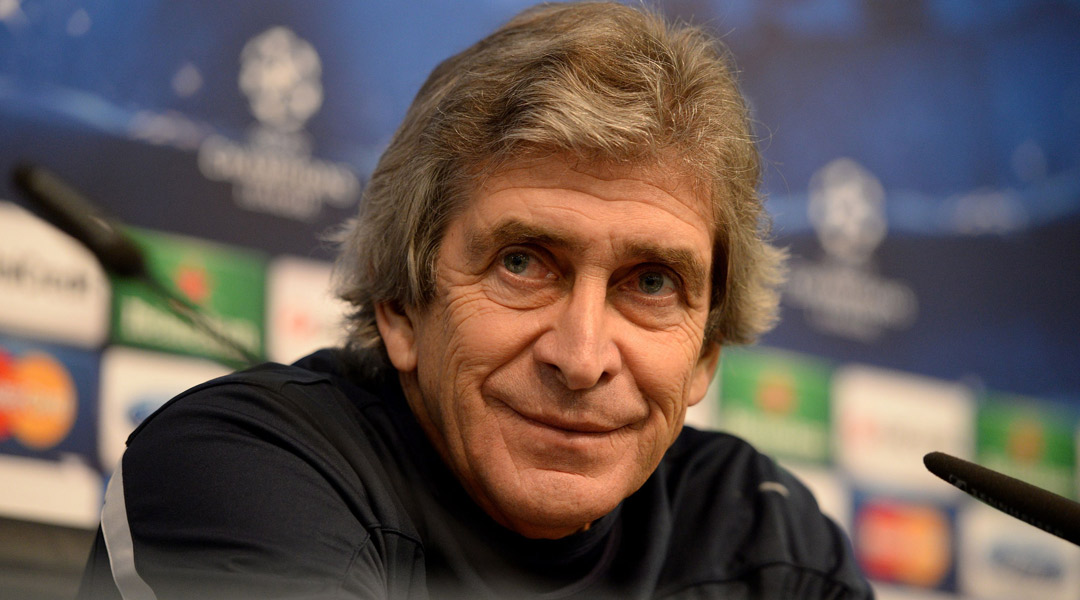
A decade ago, it was difficult to name a single Chilean player or manager at the highest level – the closest thing to a household name in their Copa America 2004 squad, for example, was former Newcastle midfielder Clarence Acuna: hardly the Premier League’s finest import.
Today, they’re blessed with talent. Alexis Sanchez is banging in the goals at Barcelona, while Arturo Vidal might be the world’s best all-round footballer. There are a variety of Chileans at top clubs – Juventus’s Mauricio Isla, Fiorentina’s Matias Fernandez and David Pizarro, and Valencia’s Eduardo Vargas. Gary Medel is an £11 million footballer, and plenty of Marcelo Bielsa’s 2010 squad have found employment across Europe.
Chile also boasts a potential title-winning manager in one of Europe’s major leagues. Manuel Pellegrini has generally been considered among the second tier of managerial talent after good work at two relatively small clubs, Villarreal and Malaga, plus a mixed season at Real Madrid. What’s for sure, however, is that he fits with Chile’s football identity.
SEE ALSO Why Manuel Pellegrini was always destined to fail as Real Madrid manager
Get FourFourTwo Newsletter
The best features, fun and footballing quizzes, straight to your inbox every week.
That identity is simple: attack, attack, attack. Bielsa wasn’t a Chilean, but brought a newfound sense of purpose to the country, evident in the development of the national side without him, and the recent success of Universidad de Chile – coincidentally, the club where Pellegrini spent his entire playing career and then started in management.
Possession football is encouraged, but it’s not Spanish-style possession dominance – it’s possession with an intent to attack. There’s a strong emphasis on forward running and vertical passes – perhaps appropriate, for the most vertical-shaped country in the world.
Pellegrini’s commitment to attack is particularly strong, and an interesting feature of his managerial career – particularly in light of his approach at City – is his insistence on fielding two strikers.
Pairing up
His commitment to using two up front started back in 2004/05 with Villarreal, his first managerial job in Spain. There, he found himself in charge of Jose Mari, a basic but hardly prolific forward who had returned after a poor spell in Serie A with Milan. Most managers would think there were two options – sign a replacement, or base the side around the big targetman and use a few midfield runners.
Pellegrini did neither. He signed Diego Forlan from Manchester United, taking a chance on a striker who had flopped in his only previous experience of European football. It worked – Jose Mari never found goalscoring form and Pellegrini tried a couple of other strikers in his place, but Forlan thrived, hitting 25 goals in his debut league season.
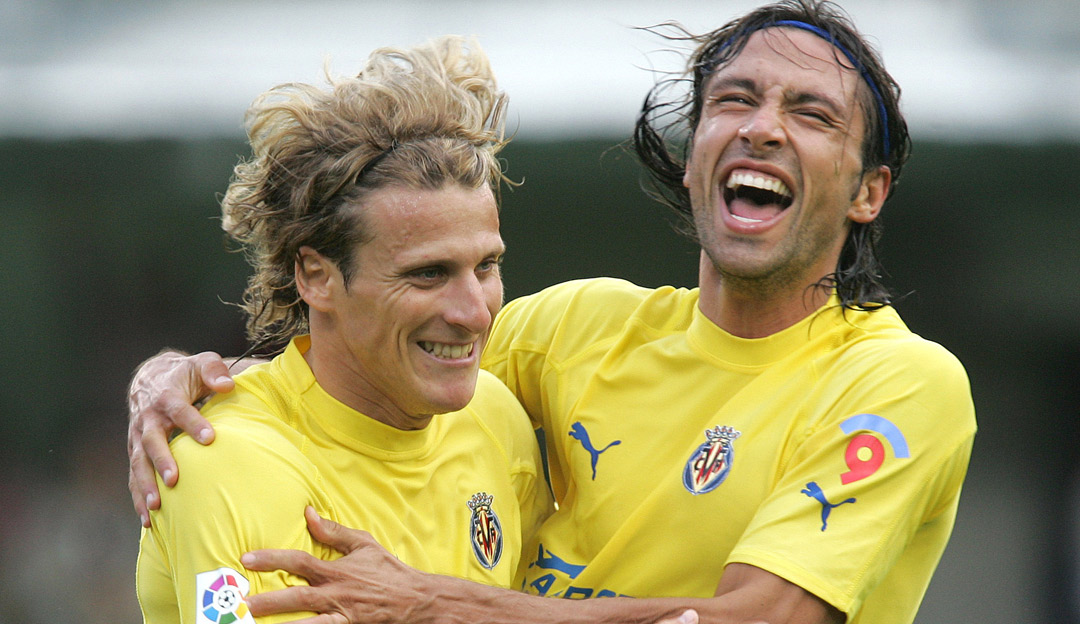
Pellegrini’s move was intriguing, because the use of two strikers forced him to deploy Juan Roman Riquelme, one of the most celebrated No.10s of his generation, from a wide starting position. The Chilean coach sometimes compromised with a 4-3-1-2, but generally wanted two up front with the creative talents like Riquelme, Robert Pires, Santi Cazorla and Cani positioned wide. They were given license to come inside, much like David Silva in Pellegrini’s current setup, but the only permanently central attackers were the two strikers.
The Forlan-centric approach lasted three seasons until the Uruguayan departed for Atletico Madrid, which allowed Pellegrini to base his side around Giuseppe Rossi and Nihat Kahveci. They became arguably Spain’s most cohesive strike duo, and Villarreal started to play amazingly intricate passing moves based around intelligent movement. Cazorla and Pires drifted inside, and to restore the width, both Rossi and Nihat – comfortable out wide – would make the opposite run, moving to the flanks. Something similar is obvious in the drifts of Edin Dzeko, Alvaro Negredo, Stevan Jovetic and Sergio Aguero out left, when Silva drifts inside.
Villarreal became one of the most attractive sides in Europe, and it was clear Pellegrini was doing something particularly inventive. The movement of the players, in particular, was remarkably cohesive. This article, written shortly after Pellegrini departed for Real Madrid, explains how Villarreal were successfully playing a 4-4-2 even as football had moved towards ‘four-band’ formations, and always retaining great width. “Pellegrini says that all five channels of attack must eventually be occupied, but not by designated personnel.”
SEE ALSO How Pellegrini & Co. are showing Europe what they've been missing in the dugout
In his brief period at Real Madrid, Pellegrini struggled to accommodate all of Real’s talents into one side amid political pressure, but it was notable that he repeatedly tried to use Cristiano Ronaldo as a forward alongside Gonzalo Higuain. Every other coach has considered Ronaldo a winger, but Pellegrini saw it as a chance to play two up front.
His two-striker obsession continued at Malaga, where he tried to play two of Jose Salomon Rondon, Julio Baptista, Javier Saviola, Ruud van Nistelrooy and Roque Santa Cruz, at various points. It was only when injuries deprived him of these veteran strikers (and he therefore played Cazorla, a familiar face from his Villarreal days, or Isco in the No.10 role) when he played one up front. Even against the force of Borussia Dortmund last season, he chose both Javier Saviola and Julio Baptista.
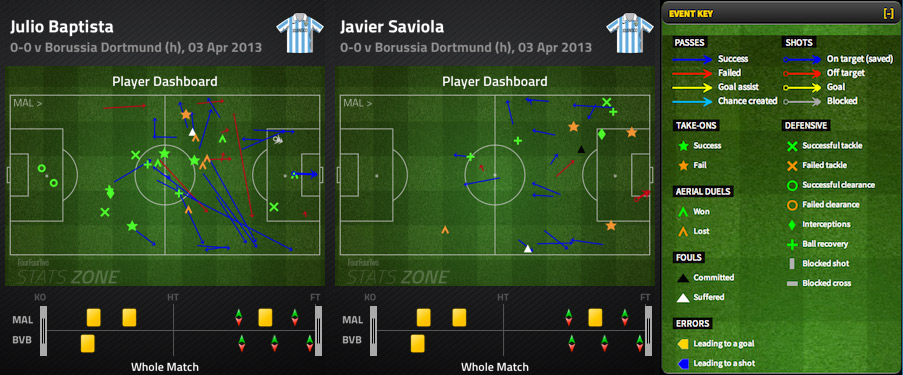
“I like playing with two central forwards,” he once told UEFA.com. “The few times we have varied our system, we usually have a central forward and an attacking midfielder, with two wingers. It hasn’t happened often, but against Barcelona yes, because they have the majority of possession, which is usually our strength, and we try to answer with our technical capabilities.”
Two's a crowd
This is enlightening in the wake of City’s recent 1-0 defeat to Chelsea, where Pellegrini surprisingly opted for a 4-4-2 system despite the lack of Sergio Aguero and Fernandinho. Their absence made the system seem much more 'boxy' going forward, and City were unable to cover so much ground in midfield. Dzeko and Negredo barely combined.
SEE ALSO Pellegrini: Negredo is 'made for the Premier League'
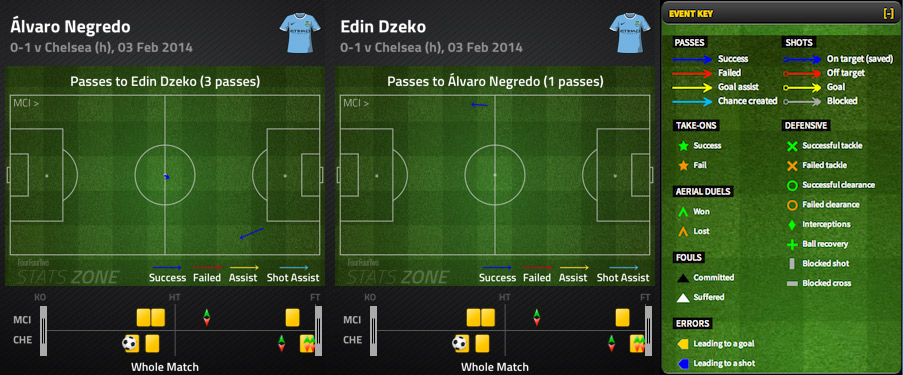
He continued with a 4-4-2 for the weekend win over Chelsea in the FA Cup, albeit with a more flexible, fluid system. It was interesting, too, that he turned to 4-2-3-1 early in the second half, seemingly trying to shut down the game.
Pellegrini’s insight in the above video is fascinating – he declares that he only plays with one centre forward against a side that dominates possession. Against a counter-attacking Chelsea side, of course, possession wasn’t an issue, and it’s intriguing that Pellegrini did use only one striker (and Silva central) against a possession-based Liverpool side at Christmas.
It’s also interesting that Pellegrini shifted to a 4-2-3-1, after his initial 4-4-2 was overpowered, against Bayern Munich in a 3-1 defeat back in October. This produced a mini-comeback, with City recording all their shots on target after the switch, scoring a goal, hitting the woodwork and getting Jerome Boateng dismissed.
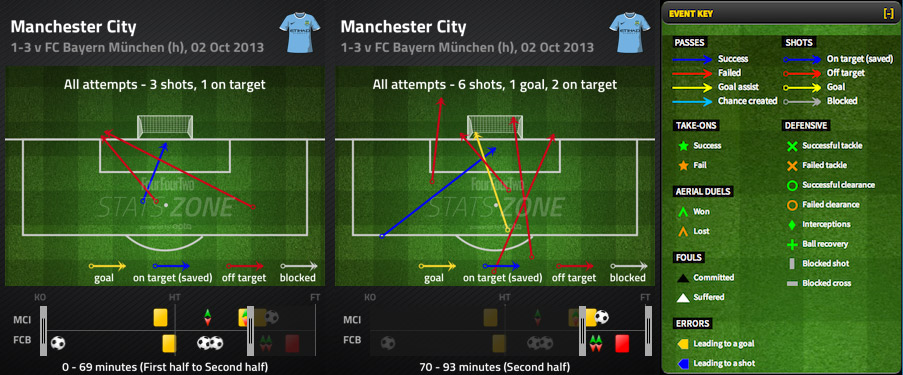
Combine Pellegrini’s comments about adapting his system against possession-based sides, and the experience against Bayern earlier in the season, and City playing a 4-4-2 against Barcelona this week feels unlikely, especially without Aguero. It’s not Pellegrini’s style, but 4-2-3-1 could be a better bet.
